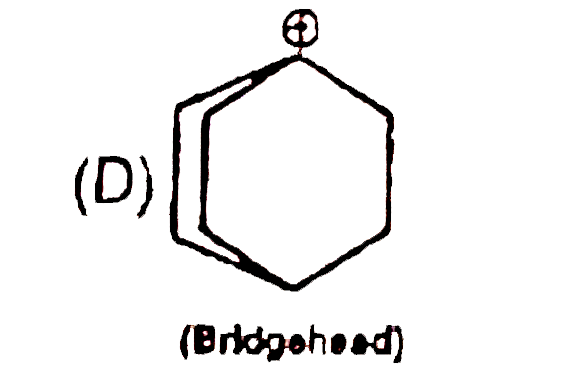Determine F.C on each atom in
(a) carbocation H3O⊕
(b) carbanion H3Cӫ
( c) free radical H3C.
(d) carbene H2C:.
Topper's Solved these Questions
- GENERAL ORGANIC CHEMISTRYBOOK - CENGAGE CHEMISTRYCHAPTER - GENERAL ORGANIC CHEMISTRYEXERCISE - Solved Example
18 Videos
- GENERAL ORGANIC CHEMISTRYBOOK - CENGAGE CHEMISTRYCHAPTER - GENERAL ORGANIC CHEMISTRYEXERCISE - Subjective
11 Videos
- CLASSIFICATION AND NOMENCLATURE OF ORGANIC COMPOUNDSBOOK - CENGAGE CHEMISTRYCHAPTER - CLASSIFICATION AND NOMENCLATURE OF ORGANIC COMPOUNDSEXERCISE - Analytical and Descriptive Type
3 Videos
- HYDROGEN, WATER AND HYDROGEN PEROXIDEBOOK - CENGAGE CHEMISTRYCHAPTER - HYDROGEN, WATER AND HYDROGEN PEROXIDEEXERCISE - Subjective Archive (Subjective)
3 Videos
Similar Questions
Determine the F.C on each atom in :
(a) HOBr
(b) ⊕NH4
( c) H2O:BBr3.
View SolutionExplain whether oxidation, reductio, or neither occurs in the following reactions :
(a) H2C=CH2→H3C−CH3
(b) HC≡CH→H3C−CH=O
( c) CH4→CH3OH
(d) H2CBr2→H2C=O
II. Give the structural formula for the simplest hydrocarbon in which C has a zero O.N.
View Solution
Knowledge Check
Identify the carbocations lesser stable than CH3−⊕CH2 :
A.⊕CH3 :BCH2=⊕CH(Vinyl Carbocation)C D
D
What is the correct order of decreasing stability of the following cations
I. CH3−⊕CH−CH3 II. CH3−⊕CH−OCH3
III. CH3−⊕CH−CH2−OCH3AII>I>IIIBII>III>ICIII>I>IIDI>II>IIIThe stability order of the given carbocations is :
i.Cl3C−CH⊕2 ii.F3C−CH⊕2 iii.H3C−CH⊕2Ai gt ii gt iiiBiii gt i gt iiCiii gt ii gt iDii gt iii gt i
Which one of the following carbanions is least stable?
(a) CH3CH−2
(b) HC≡C−
(c ) (C6H5)3C−
(d) CH−3
(e) (CH3)3C−
View SolutionGive the order of the stabilities of the following :
(i) (a) PhCH⊕2
(b) Ph2C⊕H
( c) Me2Ch⊕
(d) Me3C⊕
( e) C2H⊕5
(f) Ch⊕3
(ii) (1) PH3.C
(b) Ph.CH2
( c) Me3.C
(d) .C2H5
( e) .CH3
(iii) (a)
b) Ph3CӨ
( c) Me2CHӨ
(d) ӨCH3
( e) ӨC2H5
(f) Me3CӨ.
View SolutionExplain why (CH3)3C⊕ is more stable than CH3⊕CH2 and ⊕CH3 is less stable.
View SolutionGive the decreasing order of acidic character.
(1) NO2CH2OH,
(b) C1CH2COOH,
(c) HCOOH,
(d) CH3COOH,
( e) CH3OH
(2) (a) RCOOH
(b) ROH
( c) H2O
(d) NH3
( e) CH≡CH
(f) RH
(3) (a) HCOOH
(b) PhOH
( c) CH3OH
(d) C2H5OH
( e)CH3C≡CH
(f) CH≡CH,
(g) NH3
(4) (a) CH3COOH
(b) H3O⊕
( c) H2O
(d) C2H5COOH
( e) NH3
(f) CH≡CH
(g) CH2=CH2
(h) CH4
(i) C2H6.
(5) (a) H2O
(b) CH3OH
( c) RC≡CH
(d) H2
( e) NH3
(f) RH
(g) ROH
(6) Basic character of conjugate base of Problem 5.
View SolutionBase strength of
(i)H2C⊕CH2
(ii) H2C=⊕(CH) and
(iii) H−C≡C⊕ is in the order of
View Solution

